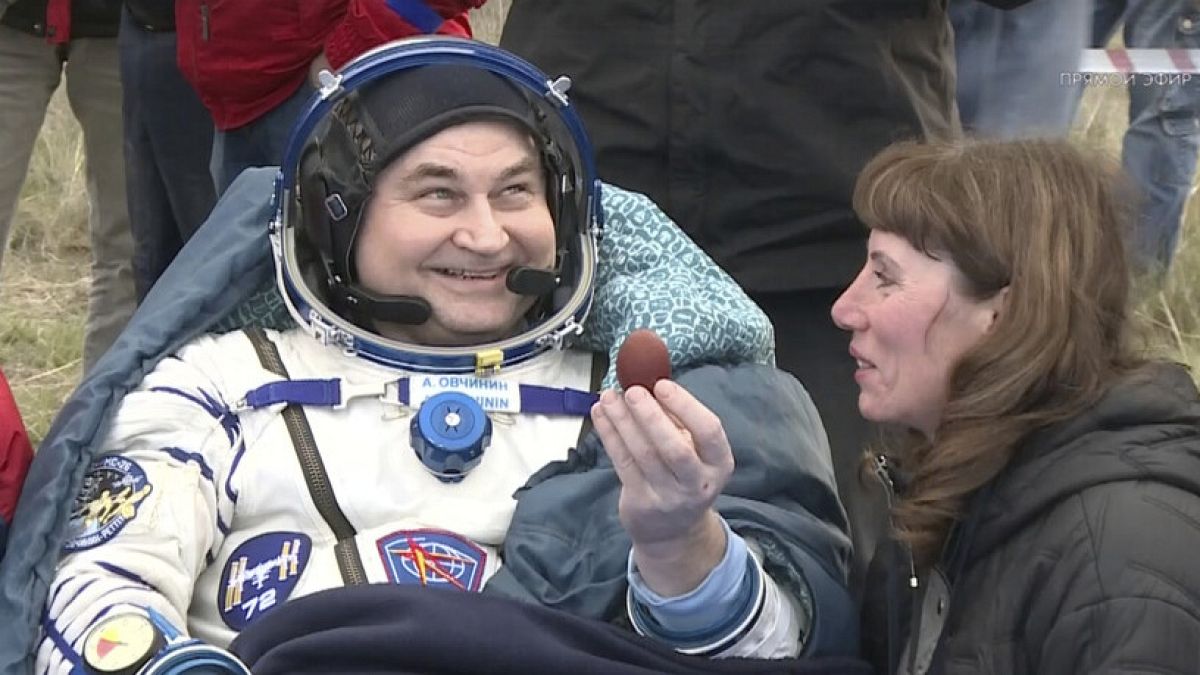Colossal Biosciences, the company behind so-called "de-extinction tech," made headlines after appearing on the cover of Time magazine on Monday having claimed to have brought back dire wolves, a species that died out over 10 millennia ago.
But beyond hyped headlines about the return of the Game of Thrones wolf, is the science behind the alleged breakthrough backing up the storytelling?
The company used genetic modification technology to create three wolf pups, which range in age from three to six months old, have long white hair, muscular jaws and already weigh in at around 36 kg, on track to reach 63.5 kg at maturity, according to researchers at the company.
Dire wolves, which lived on the American continent before going extinct, are much larger than grey wolves, their closest living relatives today.
It was this living species that was used through genetic engineering, to give life to the three specimens, Romulus, Remus, and Khaleesi.
However, independent scientists have been at pains to stress the nuance in the company’s statement announcing the species’ resurrection.
"All you can do now is make something look superficially like something else," not fully revive extinct species, said Vincent Lynch, a biologist at the University of Buffalo in the US, who was not involved in the research.
How does de-extinction tech work?
Nic Rawlence, an associate professor at the University of Otago in New Zealand, also said that it was impossible to truly de-extinct a species.
"To truly de-extinct something, you would have to clone it. The problem is we can't clone extinct animals because the DNA is not well enough preserved. Even if you sequence the genome, you can't extract DNA from extinct animals in long enough chunks like you could with a living animal," he said in a statement.
Colossal scientists learned about specific traits that dire wolves possessed by examining ancient DNA from fossils. The researchers studied a 13,000 year-old dire wolf tooth unearthed in Ohio and a 72,000 year-old skull fragment found in Idaho, both part of natural history museum collections.
Then the scientists took blood cells from a living grey wolf and used CRISPR technology (short for "clustered regularly interspaced short palindromic repeats") to genetically modify them in 20 different sites, said Colossal's chief scientist Beth Shapiro.
They transferred that genetic material to an egg cell from a domestic dog. When ready, embryos were transferred to surrogates, also domestic dogs, and 62 days later the genetically engineered pups were born.
"So what Colossal Biosciences have produced is a grey wolf with dire wolf-like characteristics – this is not a de-extincted dire wolf, rather it’s a 'hybrid,'" Rawlence said.
Though the pups may physically resemble young dire wolves, "what they will probably never learn is the finishing move of how to kill a giant elk or a big deer," because they won't have opportunities to watch and learn from wild dire wolf parents, said Colossal's chief animal care expert Matt James.
"Whatever ecological function the dire wolf performed before it went extinct, it can't perform those functions" on today's existing landscapes, Lynch added.
Broader application for conservation of other species
Colossal has previously announced similar projects to genetically alter cells from living species to create animals resembling extinct woolly mammoths, dodos and others.
Colossal also reported that it had cloned four red wolves using blood drawn from wild wolves of the southeastern US's critically endangered red wolf population.
The aim is to bring more genetic diversity into the small population of captive red wolves, which scientists are using to breed and help save the species.
In an interview with Euronews Green, tech entrepreneur and Colossal CEO Ben Lamm said that the work his company was doing to resurrect species that have died out is not as fantastical as detractors would have you believe.
"I think we're closer to de-extinction than the general public thinks," he said. "We believe de-extinction and species preservation go hand in hand".
This gene editing technology may have broader application for conservation of other species because it's less invasive than other techniques to clone animals, said Christopher Preston, a wildlife expert at the University of Montana who was not involved in the research.
But it still requires a wild wolf to be sedated for a blood draw and that's no simple feat, he added.
Lamm said the team met with officials from the US Interior Department in late March about the project.
Interior Secretary Doug Burgum praised the work on X on Monday as a "thrilling new era of scientific wonder" even as outside scientists said there are limitations to restoring the past.

 1 week ago
15
1 week ago
15





 We deliver critical software at unparalleled value and speed to help your business thrive
We deliver critical software at unparalleled value and speed to help your business thrive






 English (US) ·
English (US) ·